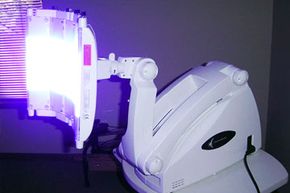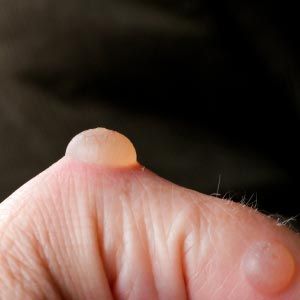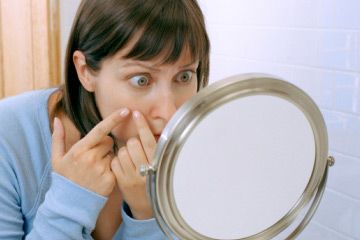If you think you're alone in your skin troubles, consider this: Approximately 80 percent of people in the world deal with acne at some point [source: Kansas City Skin Care Center]. It's caused by an excess of oil, or sebum, that's produced by the glands that surround hair follicles. When too much sebum and skin cells clog the follicles, they become irritated and inflamed, resulting in those dreaded bumps -- pimples, whiteheads, blackheads and other lesions. For this reason, acne is more common among people who have oily skin, but it can affect people of all skin types. There are a number of treatments for acne -- one of the newer ones is Blu-U.
Blu-U works to treat acne through blue-light therapy. The high intensity blue light -- combined with the topical solution called Levulan Kerastick that's applied to your face before treatment -- kills the bacteria Propionibacterium (P. acnes). Left untreated, this bacteria can worsen acne by causing additional inflammation and allowing it to spread [source: DUSA Pharmaceuticals, Inc.]. A Blu-U procedure only takes about 15 minutes and is not painful. There are minimal side effects, but one downside is that you'll have to continue getting the treatments if you want acne to stay away. Blu-U is not always a sure thing: It has proven effective in many cases but not all.
Advertisement
Originally, light treatments for acne contained ultraviolet, or UV, light. However, UV light is no longer used because of the adverse effects it is now known to have on your skin. The Food and Drug Administration (FDA) approved blue-light therapy for treating acne, but there haven't been many intense, clinical trials done on Blu-U yet, so the long-term effects of the treatment are not yet known [source: AcneNet].
If you've tried everything else to get rid of acne, and blue light therapy sounds like a good option so far, read on to the following page to learn about how much it will cost you.
Advertisement


